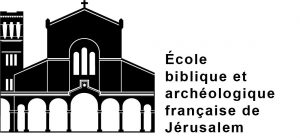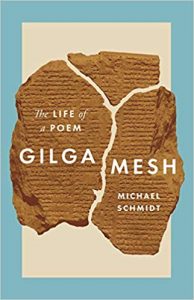Culto, em hebraico ‘abhodhâh (= serviço), é a forma tradicional segundo a qual o crente procura se relacionar com a divindade através de rituais, em geral, prefixados. O culto normalmente é uma expressão comunitária e possui seus agentes especializados, os sacerdotes; além de tender a se estabelecer em locais específicos dedicados à divindade, os templos.
O culto israelita é uma celebração de acontecimentos e tradições mais importantes ocorridos na vida do povo, vistos, sob a ótica da fé, como as obras de Iahweh em benefício de Israel. Segundo o conceito da aliança Iahweh-Israel, o culto só tem sentido quando é, de fato, a celebração daquilo que é vivido no cotidiano e ordenado pela ética javista.
E surge uma pergunta:
Profetas como Amós, Oseias, Isaías, Miqueias e Jeremias denunciaram o culto como tal?
Ou passagens como Am 5, 21-27; Os 6,1-6; Is 1,10-20; Mq 6,1-8; Jr 7,1-15 podem ser explicadas de outra maneira?
Depois de mais de um século de intensa discussão acadêmica, ainda não existe consenso.
Olhando o debate acadêmico sobre a crítica profética ao culto, é possível distinguir, do século XX para cá, três diferentes teorias.
1. A teoria da rejeição total
Em pesquisas mais antigas costumava-se afirmar que os profetas pré-exílicos clássicos, especialmente Amós, Oseias, Isaías e Jeremias, eram contra todo tipo de culto. Até os anos 50 do século XX essa parece ter sido a visão predominante entre os estudiosos da Bíblia.
Um exemplo clássico é Paul Volz no artigo Die radikale Ablehnung der Kultreligion durch die alttestamentlichen Propheten [A rejeição radical do culto pelos profetas do Antigo Testamento], publicado em Zeitschrift für systematische Theologie (ZSTh) 14: 63–85 em 1937.
Para ele, profetas como Amós e Jeremias rejeitavam o culto em sua totalidade, até mesmo porque o tipo de sacrifício praticado nos santuários de Israel tinha origem cananeia e era inferior e primitivo. Fazendo uma analogia entre Jeremias e Lutero, ele defendia que os profetas lutavam por uma forma ‘superior’ de religião, baseada no culto a Iahweh através da palavra e não através do sacrifício de animais. O viés protestante nesta tradição acadêmica antirritualística e antissacrificial é inconfundível.
Hoje esta posição foi abandonada pela maioria, embora ainda encontre defensores. Dois exemplos recentes:
KRÜGER, T. Erwägungen zur prophetischen Kultkritik [Considerações sobre a crítica profética ao culto]. In: LUX, R. ; WASCHKE, E.-J. (eds.) Die unwiderstehliche Wahrheit: Studien zur alttestamentlichen Prophetie. Leipzig: Evangelische Verlagsanstalt, 2006, p. 37–55.
BARTON, J. The Theology of the Book of Amos. Cambridge: Cambridge University Press, 2012 [cf. o item Condemnation of the Sacrificial Cult, p. 84-92].
Esta teoria de rejeição total do culto pode até explicar as expressões mais radicais da literatura profética, sem a necessidade de suavizar as formulações, mas permanecem questões como: Por que os profetas dos séculos VIII e VII a.C. defenderiam a abolição de todos os sacrifícios em Israel? Por que eles desejariam cancelar as formas estabelecidas de adoração de sua própria divindade, sem sugerir novas formas que pudessem substituí-las?
2. A teoria da rejeição limitada
E se profetas como Amós tivessem polemizado apenas contra cultos não-javistas ou fortemente sincréticos, sendo, portanto, a idolatria o grande problema? (Barstad 1984; Hrobon 2010)
E se só alguns tipos de sacrifício eram denunciados pelos profetas, como as oferendas voluntárias individuais, mas não os rituais oficiais? (Milgrom 1991)
Talvez os profetas criticassem o culto formal que não era acompanhado por uma intenção correspondente? (Hertzberg 1950; Mays 1969)
Talvez o não profético ao culto devesse ser relativizado no sentido de que o culto não vem primeiro, pois mais importante do que ele é o comportamento javista correto no dia a dia? (Bons 2004)
E se os profetas não rejeitavam o culto em si, mas aqueles que o praticavam por causa de seu comportamento em desacordo com a ética javista, nisto se aproximando do pensamento sapiencial? (Carroll 2006)
E se os textos mais radicais contra o culto fossem lidos como frutos de discussões acaloradas, fortemente retóricas, e que não deveriam ser entendidas literalmente? (Bibb 2004)
Talvez os profetas critiquem o culto porque os animais que são oferecidos são por eles considerados frutos de roubo – o que era proibido – já que eles viam a exploração dos pobres como roubo? (Klawans 2006)
As muitas expressões desta teoria mostram que é preciso, às vezes, fazer alguns malabarismos exegéticos para ler nos textos o que não está explícito ali, mas que poderia ser implicitamente considerado.
Os autores citados:
BARSTAD, H. M. The Religious Polemics of Amos: Studies in the Preaching of Amos II 7b-8, IV 1-13, V 1-27, VI 4-7, VIII 14. Leiden: Brill, 1984.
BIBB, B. D. The Prophetic Critique of Ritual in Old Testament Theology. In: GRABBE, L. L. ; BELLIS, A. O. (eds), The Priests in the Prophets: The Portrayal of Priests, Prophets, and Other Religious Specialists in the Latter Prophets. London: T&T Clark, 2004.
BONS, E. (ed.) “Car c ‘est I ‘amour qui me plait, non Ie sacrifice … “: Recherches sur Osee 6:6 et son interpretation juive et chretienne. Leiden: Brill, 2004.
CARROLL, R. P. Jeremiah. 2 v. Sheffield: Sheffield Phoenix Press, 2006.
HERTZERG, H. W. Die prophetische Kritik am Kult. ThLZ 75: 219-26, 1950.
HROBON, B. Ethical Dimension of Cult in the Book of Isaiah. Berlin: Walter de Gruyter, 2010.
KLAWANS, J. Purity, Sacrifice, and the Temple: Symbolism and Supersessionism in the Study of Ancient Judaism. Oxford: Oxford University Press, 2006.
MAYS, J. L. Hosea. London: SCM, 1969.
MILGROM, J. Leviticus 1-16: A New Translation with Introduction and Commentary. New Haven, CT: Yale University Press, 2007.
3. A teoria da rejeição total, mas conjuntural
A crítica profética do culto poderia ser vista como uma consequência da mensagem da desgraça. Como os profetas vissem como iminente a chegada do desastre e o colapso da nação, o culto era inútil, não adiantava mais, o desastre não podia ser revertido (Werner H. Schmidt 1973). Ou talvez, alternativamente, os textos possam ser lidos como resultado do desastre (Kratz 1998).
De fato, a rejeição era total e limitada, porque estava ligada a uma situação histórica específica (Eidevall 2012). Tais textos proféticos poderiam ser lidos como respostas parciais a perguntas como:
Como as quedas de Samaria e de Jerusalém aconteceram, apesar de todos os sacrifícios que o povo apresentou a Iahweh? Iahweh permitiria a destruição de seu próprio Templo?
No entanto, alguns aspectos permanecem obscuros nesta proposta:
Até que ponto é possível dizer que as críticas ao culto constituem previsões ou avisos autênticos, isto é, pronunciados antes das catástrofes de 722 a.C. (Samaria) e 586 a.C. (Jerusalém)? Até que ponto eles deveriam ser entendidos como oráculos que refletem muito mais a situação pós-catástrofe?
Os autores citados:
EIDEVALL, G. Sacrificial Rhetoric in the Prophetic Literature of the Hebrew Bible. Lewiston, New York: The Edwin Mellen Press, 2012
KRATZ, R. G. Die Kultpolemik der Propheten im Rahmen der israelitischen Kultgeschichte. In: KÖHLER B. (ed.) Religion und Wahrheit: Religionsgeschichtliche Studien. Wiesbaden: Harrassowitz, 1998.
SCHMIDT, W. H. Zukunftsgewissheit und Gegenwartskritik: Grundzüge prophetischer Verkündigung. Neukirchen-Vluyn: Neukirchener, 1973.
Referência
EIDEVALL, G. Sacrificial Rhetoric in the Prophetic Literature of the Hebrew Bible. Lewiston, New York: The Edwin Mellen Press, 2012, p. 9-28.
EIDEVALL, G. Reciprocity and the Risk of Rejection: Debate over Sacrifice in the Hebrew Bible. Religions 2018, 9, 422.
Neste artigo, Göran Eidevall vê o culto sob a ótica da reciprocidade: ele tem por objetivo manter uma troca contínua e consistente de bens reais ou simbólicos, possibilitando um relacionamento estável entre o fiel e a divindade. Ele argumenta que os profetas clássicos de Israel e de Judá não eram contra o culto em si. Eles não defendiam a abolição do culto. Eles expressaram, mesmo com suas críticas mais radicais ao culto, a consciência do risco de rejeição dos sacrifícios cultuais por razões várias. Rejeição que era, ao mesmo tempo, total e limitada, pois ancorada em situações históricas específicas.
In this article, I have argued against the view that the classical prophets in Israel and Judah were against all sacrifices. According to my analysis, they did not advocate the abolition of the sacrificial cult. To be more precise, I have attempted to demonstrate that the authors of these prophetic writings did not express such an anti-cultic view. Rather, they exploited the awareness of a certain risk of rejection, which can be seen as a corollary of the reciprocal character of sacrificial worship, for their own rhetorical and ideological purposes. Thus, it was maintained that some divine declarations of large-scale rejection of the people’s sacrifices served as retrospective explanations of national disasters. Most importantly, the cult-critical passages in the prophetic literature are always connected to a specific site or situation. Therefore, in the book of Amos, radical rejection of the cult performed in one temple (for instance, Bethel) would seem to be perfectly compatible with promotion of the cult of another temple (Jerusalem). Similarly, for the authors of the book of Jeremiah, there was no contradiction between condemnation of sacrificial cult in the past and enthusiastic support of sacrificial cult in their own time. According to the analysis presented in this article, all the diverse statements on cultic offerings that one can find in the books of Amos and Jeremiah (and, by extension, in the prophetic literature as a whole) attest to the centrality of sacrifice in the conceptual world of the biblical writers. If sacrificial worship was considered unnecessary, certain texts that proclaim radical rejection (such as Amos 5:21–24 and Jer 6:20) would lose much of their rhetorical force. Similarly, if they did not regard sacrificial worship as an essential part of a well-functioning human-divine relationship, the prophetic writers would not have included this in their depictions of a utopian future.
 l’occasion, de même que Dominique Trimbur, chercheur associé au CRFJ et auteur d’un ouvrage qui analyse le contexte de la création de cette École archéologique française, au moment où la Palestine passait sous mandat britannique.
l’occasion, de même que Dominique Trimbur, chercheur associé au CRFJ et auteur d’un ouvrage qui analyse le contexte de la création de cette École archéologique française, au moment où la Palestine passait sous mandat britannique.
